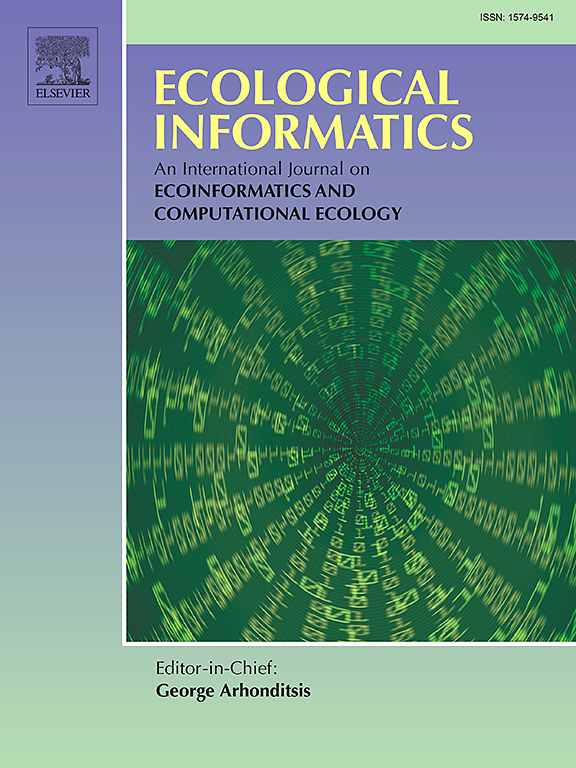基于新遥感指数的高植被覆盖区生态评估和驱动因素分析
IF 5.8
2区 环境科学与生态学
Q1 ECOLOGY
引用次数: 0
摘要
生态系统退化和衰退是全球环境保护工作亟需解决的核心问题。因此,准确分析区域生态环境质量的时空演变规律,探究生态环境质量的自然和人为驱动因素,对于保护区域生态环境、推进可持续发展战略至关重要。因此,本研究创建了一种新的遥感生态指数,以研究植被覆盖区生态环境质量的长时间序列变化规律,并确定了气候、地形、土壤和城市化等各种驱动因素的强度和局部响应关系。结果表明,黑龙江地区生态质量呈上升趋势,生态质量空间自相关性较强。森林覆盖区的生态等级明显高于其他植被区、城市区和荒漠区。通过多种地理统计方法的协同分析,确定了驱动因素的强度及其局部响应关系。这项研究为准确、快速地评估区域生态环境质量和探索驱动因素的复杂相互作用提供了方法,从而为监测区域尺度的生态状况、平衡生态和经济发展以及为环境保护政策提供参考提供了理论依据。本文章由计算机程序翻译,如有差异,请以英文原文为准。
Ecological assessment and driver analysis of high vegetation cover areas based on new remote sensing index
Ecosystem degradation and decline are central issues that urgently require resolution within global environmental protection efforts. Accordingly, accurately analyzing the spatiotemporal evolution of regional ecological environmental quality and exploring its natural and anthropogenic driving factors of ecological environmental quality are crucial for protecting regional ecological environments and advancing sustainable development strategies. Therefore, this study created a new remote sensing ecological index to investigate the patterns of ecological quality change in vegetation-covered areas over a long time series and identified the intensity and local response relationships of various driving factors, including climate, topography, soil, and urbanization. The results revealed an upward trend in the ecological quality of the Heilongjiang region, with a high degree of spatial autocorrelation in ecological quality. The ecological grades in forest-covered areas significantly surpassed those in other vegetated, urban, and desert regions. Through a collaborative analysis of various geographical statistical methods, the intensities of the driving factors and their local response relationships were determined. This study provides a method for accurately and rapidly assessing regional ecological environmental quality and exploring the complex interactions of driving factors, thus offering a theoretical basis for monitoring regional-scale ecological conditions, balancing ecological and economic development, and informing environmental protection policies.
求助全文
通过发布文献求助,成功后即可免费获取论文全文。
去求助
来源期刊

Ecological Informatics
环境科学-生态学
CiteScore
8.30
自引率
11.80%
发文量
346
审稿时长
46 days
期刊介绍:
The journal Ecological Informatics is devoted to the publication of high quality, peer-reviewed articles on all aspects of computational ecology, data science and biogeography. The scope of the journal takes into account the data-intensive nature of ecology, the growing capacity of information technology to access, harness and leverage complex data as well as the critical need for informing sustainable management in view of global environmental and climate change.
The nature of the journal is interdisciplinary at the crossover between ecology and informatics. It focuses on novel concepts and techniques for image- and genome-based monitoring and interpretation, sensor- and multimedia-based data acquisition, internet-based data archiving and sharing, data assimilation, modelling and prediction of ecological data.
 求助内容:
求助内容: 应助结果提醒方式:
应助结果提醒方式:


